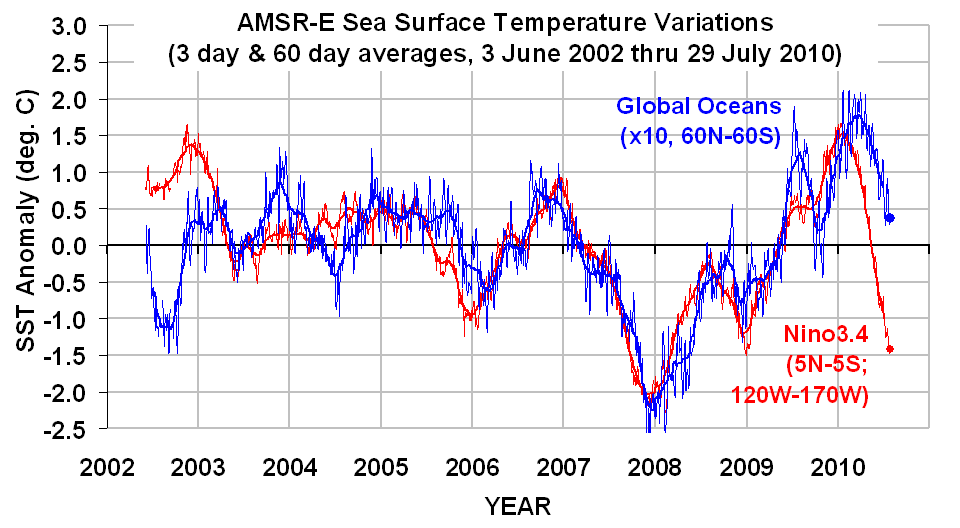Sea Surface Temperatures (SSTs) measured by the AMSR-E instrument on NASA’s Aqua satellite continue the fall which began several months ago. The following plot, updated through yesterday (July 29, 2010) shows that the cooling in the Nino34 region in the tropical east Pacific continue to be well ahead of the cooling in the global average SST, something we did not see during the 2007-08 La Nina event (click on it for the large, undistorted version; note the global SST values have been multiplied by 10):

 |

 Home/Blog
Home/Blog



